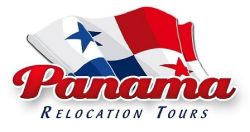I love Panama but it’s not all rainbows and unicorns. There are problems here too, as there are anywhere. One problem that is getting increasing attention is AIDS. According to USAIDS there were 21,000 people in Panama living with AIDS in 2016 (http://www.unaids.org/en/regionscountries/countries/panama) Of these a bit over half of them are getting antiretroviral therapy.
According to this article HERE, there is worry that thousands of young people are becoming infected. It’s in Spanish but roughly translated, it says 17 people between the ages of 15 and 19 were found to be infected in 2016, and 1175 between the ages of 10 and 19 have been found since the first case was identified in 1984. Young people aren’t being careful about taking precautions, and if they get infected they don’t want to tell their families because of the stigma. Half of the infected kids are in the Ngabe Bugle Comarca, the area belonging to the indigenous people. In that part of the country, getting people to treatment can be very challenging because much of it is inaccessible much of the time.
This article from NPR (in English) is much more alarming. San Felix is a town close to the edge of the Comarca and many indigenous come for the clinic there. The doctor in the clinic said in 2010 he had 30 people being treated for AIDS. By the end of last year he had 550. This article also talks about the stigma, and the very challenging problems of getting people care in such a remote and inaccessible area. Even getting condoms to the Comarca is difficult.
This article from News Room Panama from three years ago, said it was estimated that 20,000 people were living with AIDS. Efforts were just beginning to take the disease more seriously, find infected people and get them treatment (which is free). But, since many of the infected are LGBT, there is a lot of stigma to overcome for this and for the disease in general, along with the challenges of treating people in remote locations.
AIDS is a horrible disease. Growing up in the music and arts world in New York, I know many people who died from it. If I hadn’t left the city in 1979 just before the disease starting spreading, who knows how it could have affected me too. As a nurse it caught up with me later in the Midwest as I started seeing infected patients. In Florida for a time, one of my jobs was to visit infected people and teach them how to inject a new medication that was having really promising results. Thankfully today, AIDS doesn’t have to be the death sentence it was in the past, but infected people have to be identified and treated, and everyone needs to be taught prevention.







very important information Kris, thank you for sharing.
LikeLike
You are welcome. Thinking good thoughts for you and the coming hurricane!
LikeLiked by 1 person
……..thank goodness we are not located near the hurricane……….but for those who are, many prayers sent. thanks again for your wonderful blog.
LikeLike
Ahh good. For some reason I had it in my head you were in N.C. it’s going to be a big problem for a lot of others though.
LikeLiked by 1 person
oh yes it will………no, I am actually in the midwest, we deal “only” with tornadoes.
LikeLike
Ugh, especially scary because they can come out of nowhere and level everything in their path. I lived in Kansas for quite a while
LikeLiked by 1 person
oh yes, Kansas gets their fair share of tornadoes.
LikeLiked by 1 person
my mom lived 25 years with the disease which she contracted from her husband of 20 years. When he died he had no idea he had “aids.” It was much scarier back then, education is SOOO important. Great post!
LikeLike
AIDS used to be a certain death sentence. Thankfully this is no longer the case, and I’m very happy to hear your mom had so many good years.
LikeLike